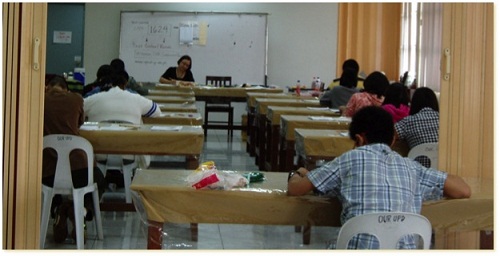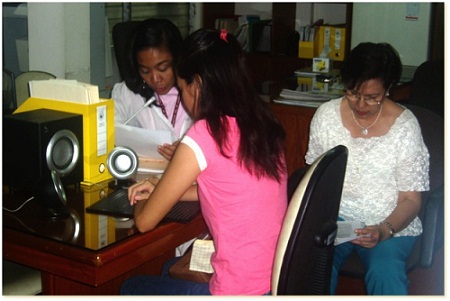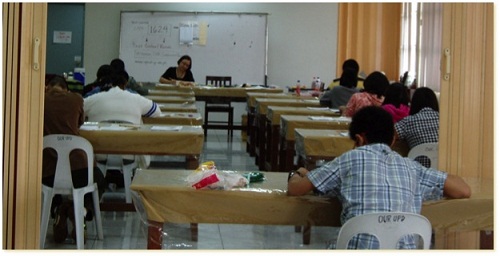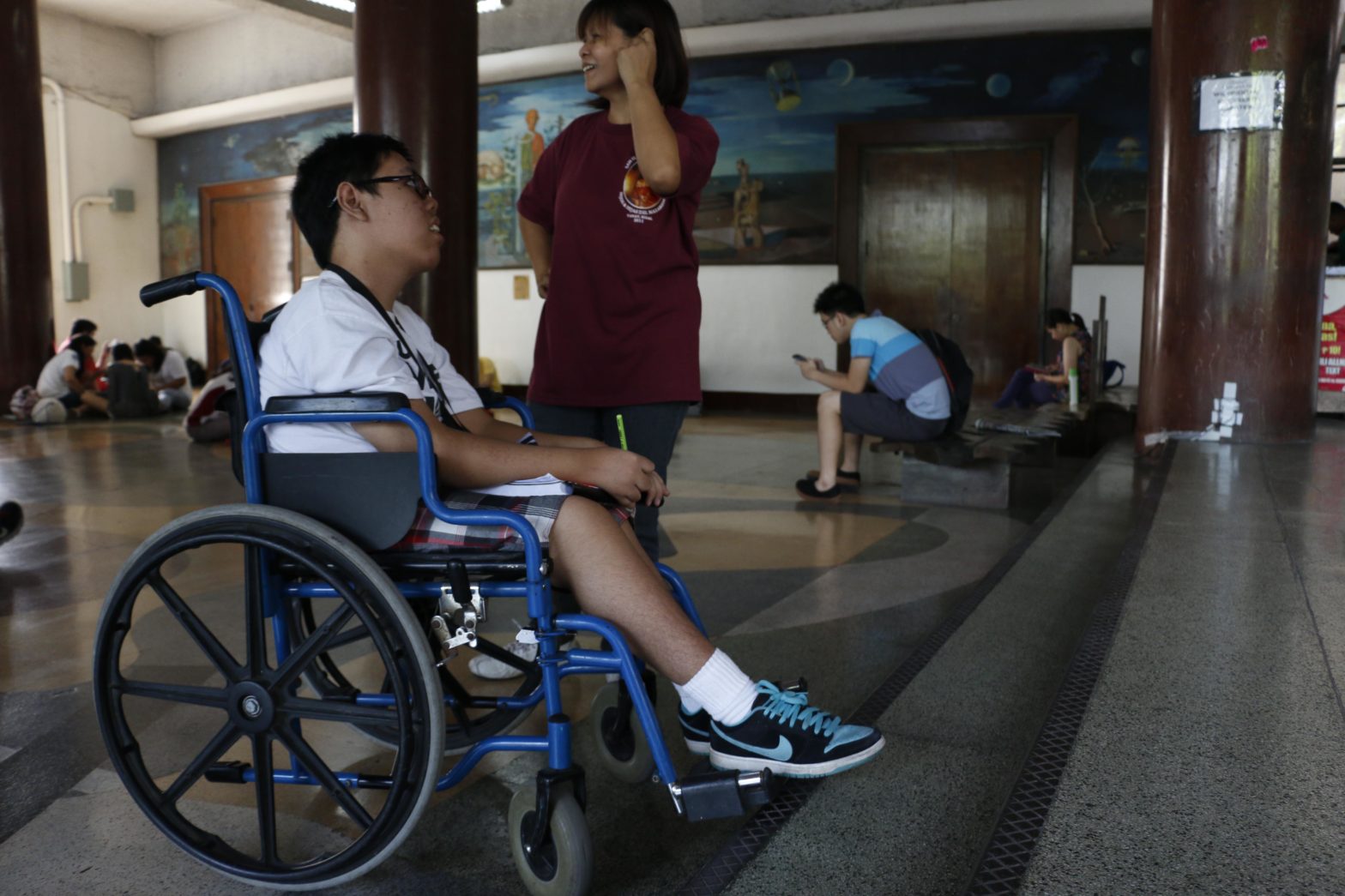By AMER R. AMOR
 FOR the first time in the history of the University of the Philippines College Admission Test, a visually impaired high school senior will take the entrance exam to the country’s premier university using a test booklet entirely produced using a Braille printer or embosser.
FOR the first time in the history of the University of the Philippines College Admission Test, a visually impaired high school senior will take the entrance exam to the country’s premier university using a test booklet entirely produced using a Braille printer or embosser.
While this is not the first time that the UPCAT will be administered to someone with a visual impairment, it is the firs time the UP will use a Braille booklet as part of what is known as the Special UPCAT administered to students with disabilities.
Prof. Therese Bustos of the UP College of Education in Diliman, who has been administering the UPCAT for persons with disabilities for the past five years, said the Special UPCAT is a way by which the university asserts itself as an academic institution to address diversity.
“Every young Filipino has the right to take the UPCAT,” said Bustos, an expert in special education who trains future teachers to deal with persons with disabilities. “But the university recognizes that not everybody performs in the same manner and that people have different skills and sometimes, special needs.”
The Special UPCAT considers applicants with sensorial impairment such as visual and hearing impairment, and learning disabilities like dyslexia. It is usually administered the week following the UPCAT weekend, which falls on Aug. 3 and 4 this year.
On Friday, Aug. 9, UP will conduct the entrance test for the sole visually impaired examinee. On Wednesday, Aug. 7, five students, most of whom have hearing disabilities, will also take the Special UPCAT, which is held at the Office of Admissions in Diliman.
Bustos said this is a testament to the university’s commitment to give every applicant a fair shot at a UP education and “make the UP studentry more representative of the nation’s population.”
In 2009, 14 students took the Special UPCAT, the highest number of examinees on record since 2003.
 Effie Vinia Diane Catibog of the University of the Philippines’ Office of Admissions says the special exam does not only acknowledge the new UP Charter’s mandate on democratic access to education. It also upholds the Magna Carta for Disabled Persons which states that the country must consider the special needs of persons with disabilities in formulating educational policies and programs.
Effie Vinia Diane Catibog of the University of the Philippines’ Office of Admissions says the special exam does not only acknowledge the new UP Charter’s mandate on democratic access to education. It also upholds the Magna Carta for Disabled Persons which states that the country must consider the special needs of persons with disabilities in formulating educational policies and programs.
Catibog, who has been administering the Special UPCAT since 2003, explains that UPCAT examinees are encouraged to declare their impairment so that they can get proper assistance during the examination.
Most of the examinees who have taken the Special UPCAT were visually or aurally-impaired and people who have autism, Tourette’s syndrome, and Attention Deficit Hyperactivity Disorder (ADHD).
Meanwhile, students with physical disabilities who are accommodated in the mainstream UPCAT sessions are usually assigned to test centers with accessible halls and facilities.
Aside from the usual requirements, applicants who wish to take part in the special session are instructed to submit a medical report, and a letter from the school attesting to their disability. This is followed by interviews with parents and high school officials.
“As soon as we receive their applications and we evaluate them to be qualified for the Special UPCAT, we explain to the students and the parents the dynamics of taking the special session, and then they can choose whether to take the regular exam or the Special UPCAT,” Catibog said.
While the sessions strictly follow the same standardized examinations, the preparation for and administration of the Special UPCAT is a taxing process that examiners do not mind.
“They are given extra considerations in terms of the length of the exam period. They are given more time than the usual four and five minutes duration of the exam. I think they deserve that,” Bustos said.
Over the years, the Office of Admissions has devised different ways to address every special need of students taking the Special UPCAT. During sessions mostly comprised of hearing impaired students, Bustos acts as a sign language interpreter. She also distributes special instructions booklets.
During its early years, sessions attended by visually impaired examinees required an examiner who did not only time the session but also shaded the answer sheet for the examinees. Another examiner read the exam out loud for the students.
“Not every visually-impaired student knows how to read Braille, so we have the exams read out loud by the examiner,” explained Catibog.
“We have learned how to address their need accordingly. Only very few people in the Office of Admissions are authorized to read the content of the exam for blind applicants. Just the same, we also prepare hand Braille,” she added.
Aside from the Braille figures and items, the Office of Admissions had also come up with digital answer sheets in the past. One of their most notable innovations was printing a very thick test booklet for students with low vision. With a font size of 24, each page contained three questions at most.
Despite the tedious process, both Bustos and Catibog understand that it is the right thing to do. “I am happy to be doing this kind of work, it’s fulfilling. Some universities are actually surprised that we are able to do this. We should encourage more universities to provide people with disabilities more opportunities and access to education,” Bustos said.
“After ten years of doing the same exact thing, people will think that it can get boring,” Catibog said. “But this kind of work has allowed me to meet spectacular parents, people who are really worth talking to. When you call these parents and inform them that their children have been qualified to take the special exam, they get very happy even when they know that their children will not pass the exam. And it makes you a better person just by being surrounded by them. These parents show that love has no boundaries.”
(Amer R. Amor is an UPCAT examiner.)

